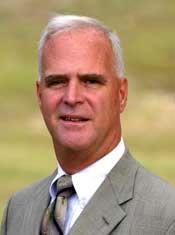A Century after Sinking of Titanic, Navigational Science Research Still Crucial
Fri, 04/13/2012 - 11:44am

One hundred years ago this week, the RMS Titanic, a state-of-the-art British ocean liner sailing on its maiden voyage, struck an iceberg in the North Atlantic and sunk. More than 1,500 passengers lost their lives in this catastrophic maritime incident that was the catalyst for a comprehensive international treaty addressing maritime operations.
The International Convention on Safety of Life at Sea (SOLAS) was adopted by the maritime nations in 1914, and its current version provides a legal impetus for the Hydrographic Science Masters Degree Program offered by the Department of Marine Science at The University of Southern Mississippi. The department is located at the Stennis Space Center in Hancock County, Miss.
The one-year, intensive masters degree program offered by Southern Miss is one of only two such programs in North America recognized by the International Hydrographic Organization, the International Federation of Surveyors and the International Cartographic Association as meeting their highest level of certification for preparing hydrographic surveyors to meet the rigorous demands set forth by the International Hydrographic Organization to satisfy the mandates of SOLAS.
“These hydrographers, equipped with the technical skills gained at Southern Miss, are leading teams to ensure today's ships can navigate safely throughout the world,” said Ken Barbor, director of the Hydrographic Science Research Center at Southern Miss. “They have specifically responded to establish safe navigation corridors for relief supplies following the natural disasters of Hurricane Katrina, the Japanese Tsunami and the earthquakes affecting Indonesia and Haiti.”
SOLAS requires that its signatory coastal states provide for the collection, distribution and updating of hydrographic information necessary to ensure safety of navigation on waters under their jurisdiction. Hydrographic information is also most widely recognized as the paper or digital nautical charts used by commercial and recreational boaters, and includes precise positioning and depiction of aids to navigation (such as buoys, lights, and prominent structures), dangers to navigation (such as shipwrecks, rocks, and shoals), water depth, the coastline, the nature of the seafloor and tidal influences.
The hydrographic program at Southern Miss, initiated through a collaboration with the U.S. Navy in 1999, has awarded nearly 130 graduate degrees to hydrographers working for the Navy, NOAA, National Geospatial Intelligence Agency, Army Corps of Engineers, various private survey companies and hydrographic agencies from 17 different countries.
Prior to joining Southern Miss, Barbor achieved the rank of Rear Admiral in the U.S. Navy, served as the commander of Naval Meteorology and Oceanography Command, and also served as a director of the International Hydrographic Bureau in Monaco for five years.
For more information about hydrographic science and the program at Southern Miss, contact Barbor at 228.688.3720 or e-mail ken.barborFREEMississippi; online visit www.usm.edu/marine